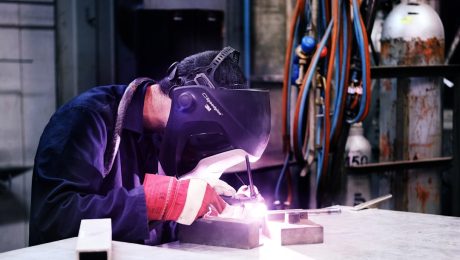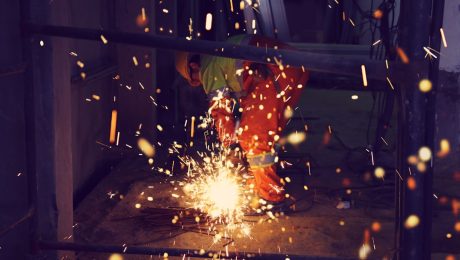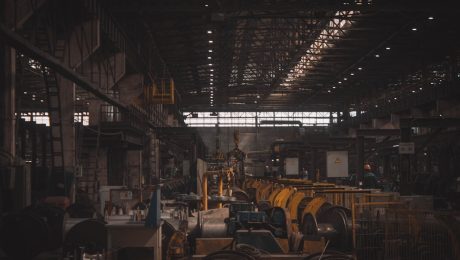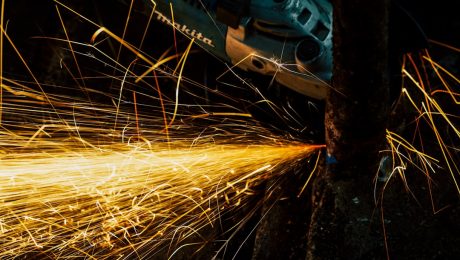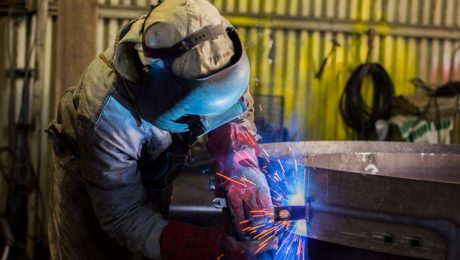Stainless steel. The name itself conjures images of durability, elegance, and hygiene. But beyond its familiar sheen lies a surprisingly complex world of grades, alloys, and applications. This comprehensive guide will demystify stainless steel, helping you navigate the options and choose the perfect product for your needs.
Understanding Stainless Steel Grades and Their Properties
The versatility of stainless steel stems from its diverse range of grades, each possessing unique properties tailored to specific applications. These grades are primarily categorized by their chromium content, which is the key element providing corrosion resistance. The most common grades include:
- 304 (18/8): This is the workhorse of stainless steel, boasting excellent corrosion resistance and formability. It’s widely used in kitchenware, appliances, and architectural applications.
- 316 (18/10): This marine-grade stainless steel contains molybdenum, enhancing its resistance to chloride corrosion, making it ideal for coastal environments and medical equipment.
- 430: A less expensive ferritic grade, 430 offers good corrosion resistance but is less formable than austenitic grades like 304 and 316. Commonly used in automotive parts and appliances.
- 410: A martensitic grade, 410 is known for its high strength and hardness, often used in cutlery and tools.
Choosing the right grade depends heavily on the intended application and the environmental conditions it will face. Consider factors like exposure to chemicals, temperature fluctuations, and required strength when making your selection.
Common Applications of Stainless Steel Products
The exceptional properties of stainless steel make it a ubiquitous material across numerous industries. Its applications are vast and varied, including:
- Kitchen and Food Service: From cookware and cutlery to countertops and refrigerators, stainless steel’s hygiene and durability make it a staple in food preparation and handling.
- Architecture and Construction: Its strength, corrosion resistance, and aesthetic appeal make it a popular choice for building facades, roofing, handrails, and structural components.
- Medical and Pharmaceutical Industries: The biocompatibility and ease of sterilization of stainless steel make it essential in medical instruments, implants, and pharmaceutical equipment.
- Automotive Industry: Used in exhaust systems, body panels, and other components, stainless steel contributes to vehicle durability and longevity.
- Chemical Processing: Its resistance to a wide range of chemicals makes it vital in tanks, pipes, and other equipment used in chemical processing plants.
The specific grade of stainless steel used will vary depending on the demands of each application, emphasizing the importance of careful selection.
Caring for Your Stainless Steel Products
Proper care ensures the longevity and beauty of your stainless steel items. While inherently durable, stainless steel can be susceptible to staining and damage if not maintained correctly. Here are some key tips:
- Regular Cleaning: Use a mild detergent and warm water for regular cleaning. Avoid abrasive cleaners or scouring pads, which can scratch the surface.
- Dealing with Stains: Most stains can be removed with a paste of baking soda and water. For stubborn stains, consult a specialized stainless steel cleaner.
- Preventing Water Spots: Dry stainless steel surfaces thoroughly after cleaning to prevent water spots.
- Protecting from Scratches: Use cutting boards and placemats to protect your stainless steel surfaces from scratches.
By following these simple guidelines, you can keep your stainless steel products looking their best for years to come.
Choosing the Right Stainless Steel Product: A Buyer’s Guide
Selecting the appropriate stainless steel product requires careful consideration of several factors:
- Intended Use: What will the product be used for? This dictates the required strength, corrosion resistance, and other properties.
- Environmental Conditions: Will the product be exposed to harsh chemicals, extreme temperatures, or other challenging environments?
- Budget: Different grades of stainless steel vary in price. Balance your budget with the required performance characteristics.
- Aesthetic Considerations: Consider the finish (polished, brushed, etc.) and overall appearance of the product.
- Manufacturer Reputation: Choose reputable manufacturers known for producing high-quality stainless steel products.
By carefully weighing these factors, you can make an informed decision and select the perfect stainless steel product for your needs.
The Future of Stainless Steel: Innovations and Trends
The world of stainless steel is constantly evolving. Research and development efforts are focused on creating even more durable, corrosion-resistant, and sustainable alloys. Emerging trends include:
- Advanced Alloys: Development of new alloys with enhanced properties for specific applications.
- Sustainable Manufacturing: Focus on reducing the environmental impact of stainless steel production.
- Recyclability: Increasing the recyclability of stainless steel to promote a circular economy.
- New Surface Treatments: Development of innovative surface treatments to enhance aesthetics and durability.
These advancements promise to further expand the applications and capabilities of stainless steel in the years to come.
This guide provides a comprehensive overview of the world of stainless steel. Remember to always consult with a specialist for specific applications or complex projects.
In the world of construction, manufacturing, and engineering, the use of steel is ubiquitous. But not all steel is created equal. Choosing the right steel, especially for projects requiring high safety standards, is crucial. This is where CE certification comes in. This comprehensive guide will delve into the world of CE-certified steel products, explaining their significance, the certification process, and why they are essential for your projects.
What Does CE Certification Mean for Steel Products?
The CE marking (Conformité Européenne, meaning “European Conformity”) is a mandatory conformity marking for products sold within the European Economic Area (EEA). It indicates that the product meets the essential requirements of relevant European Union (EU) health, safety, and environmental protection legislation. For steel products, this means that they have undergone rigorous testing and evaluation to ensure they meet specific standards regarding mechanical properties, chemical composition, and manufacturing processes. The CE marking isn’t a quality mark in itself; rather, it’s a declaration by the manufacturer that their product complies with the relevant EU directives. Absence of the CE marking signifies non-compliance and can lead to legal repercussions.
The Rigorous Process of CE Certification for Steel
Achieving CE certification for steel products is a multi-stage process that demands meticulous attention to detail. It typically involves:
- Product Design and Specification: The manufacturer must design the steel product to meet the relevant European standards (EN standards). This includes defining the required material properties, dimensions, and tolerances.
- Testing and Verification: Independent testing laboratories conduct thorough assessments to verify that the steel meets the specified requirements. Tests may include tensile strength, yield strength, elongation, impact resistance, chemical composition analysis, and other relevant parameters depending on the specific application of the steel.
- Quality Management System (QMS): Manufacturers must implement and maintain a robust QMS, typically ISO 9001 certified, to ensure consistent product quality throughout the manufacturing process. This includes procedures for material sourcing, production, inspection, and testing.
- Declaration of Conformity (DoC): Once testing is complete and the QMS is audited, the manufacturer prepares a DoC, a formal declaration stating that the product complies with all applicable EU directives. This document is a critical part of the certification process.
- CE Marking Application: Finally, the CE marking is affixed to the product or its packaging, signifying that it meets the required standards and is legally compliant for sale within the EEA.
Benefits of Using CE-Certified Steel Products
Choosing CE-certified steel offers numerous advantages:
- Enhanced Safety: The rigorous testing ensures the steel meets stringent safety requirements, minimizing risks associated with structural failure or other hazards.
- Improved Reliability: CE certification provides confidence in the consistency and reliability of the steel’s performance, leading to more predictable and dependable project outcomes.
- Legal Compliance: Using CE-marked steel ensures compliance with EU legislation, avoiding potential legal issues and penalties.
- Enhanced Reputation: Specifying CE-certified steel demonstrates a commitment to quality and safety, enhancing the reputation of the project and its stakeholders.
- Simplified Procurement: CE certification simplifies the procurement process by providing a clear indication of compliance with EU standards.
Common Applications of CE-Certified Steel
CE-certified steel finds wide applications across various sectors:
- Construction: In buildings, bridges, and other structures, ensuring structural integrity is paramount. CE-certified steel provides the necessary assurance.
- Manufacturing: Various industrial components and machinery often rely on high-quality steel for durability and performance. CE certification ensures these components meet the required standards.
- Automotive: The automotive industry utilizes steel in various parts, and CE certification guarantees the safety and reliability of these components.
- Offshore and Marine: The demanding conditions of offshore and marine environments require robust and reliable materials. CE-certified steel ensures the structural integrity of platforms, vessels, and other structures.
- Energy: In power generation and transmission infrastructure, reliable and safe materials are critical. CE-certified steel plays a vital role in ensuring the safety and performance of these systems.
Identifying Genuine CE Certification
It’s crucial to be able to identify genuine CE markings to avoid counterfeit products. A genuine CE marking should be clearly visible and correctly affixed to the product or its packaging. It should not be easily removable. Furthermore, manufacturers are legally required to provide a Declaration of Conformity (DoC) upon request. This document should contain detailed information about the product, the relevant standards met, and the manufacturer’s details. If you have any doubts about the authenticity of a CE marking, contact the manufacturer or an independent testing laboratory for verification.
In conclusion, selecting CE-certified steel products is a vital step in ensuring the safety, reliability, and legal compliance of any project. Understanding the meaning of CE certification, the certification process, and the benefits it offers is crucial for all stakeholders involved in the selection and use of steel products.
The steel industry, a cornerstone of global infrastructure, is undergoing a dramatic transformation fueled by the rapid adoption of digital technologies. Digital steel platforms are no longer a futuristic concept; they’re becoming essential for competitiveness, efficiency, and sustainability. This post delves into the key trends shaping these platforms and their impact on the industry.
1. AI-Powered Optimization: Precision and Predictive Power
Artificial intelligence (AI) is revolutionizing steel production by optimizing processes at every stage. From raw material sourcing and quality control to production planning and energy consumption, AI algorithms can analyze vast datasets to identify inefficiencies and predict potential problems. Machine learning models can learn from historical data to optimize furnace temperatures, predict equipment failures, and enhance the overall yield and quality of steel products. This predictive capability minimizes downtime, reduces waste, and significantly improves operational efficiency. Furthermore, AI-powered quality control systems can detect defects with greater accuracy and speed than traditional methods, ensuring consistent product quality and reducing costly rework.
2. Blockchain Technology: Transparency and Traceability in the Supply Chain
The steel supply chain is complex, involving numerous stakeholders across the globe. Blockchain technology offers a solution to enhance transparency and traceability throughout this intricate network. By recording all transactions and movements of steel products on a secure, immutable ledger, blockchain ensures greater visibility and accountability. This can help combat counterfeiting, improve supply chain security, and streamline logistics. Furthermore, blockchain can facilitate faster and more efficient payment processes, reducing delays and improving cash flow. The ability to track the origin and journey of steel products also supports sustainability initiatives by enabling the verification of ethical sourcing and responsible manufacturing practices.
3. The Rise of the Digital Twin: Virtual Modeling for Enhanced Performance
Digital twins are virtual representations of physical assets, processes, or systems. In the steel industry, digital twins of furnaces, rolling mills, and entire production lines allow engineers and operators to simulate various scenarios, optimize parameters, and identify potential issues before they occur in the real world. This predictive capability significantly reduces the risk of costly downtime and production disruptions. Furthermore, digital twins can be used for training purposes, allowing operators to practice complex procedures in a safe and controlled environment. The continuous integration of real-time data from sensors and other sources keeps the digital twin synchronized with the physical asset, ensuring its accuracy and relevance.
4. Sustainable Steel Production: Data-Driven Green Initiatives
The steel industry is a significant contributor to global carbon emissions. Digital steel platforms are playing a crucial role in developing and implementing sustainable practices. By analyzing energy consumption patterns and identifying areas for improvement, digital technologies can help reduce the carbon footprint of steel production. This includes optimizing energy usage in furnaces, improving the efficiency of processes, and exploring alternative energy sources. Furthermore, digital platforms can facilitate the use of recycled materials and support the development of new, more sustainable steel alloys. Data-driven insights help steelmakers make informed decisions to minimize their environmental impact and meet increasingly stringent environmental regulations.
5. Enhanced Collaboration and Data Sharing: Breaking Down Silos
Effective collaboration is vital across the steel value chain. Digital platforms facilitate seamless data sharing and communication between different stakeholders, breaking down traditional information silos. This allows for better coordination between suppliers, manufacturers, distributors, and customers, leading to improved efficiency and responsiveness. Real-time data sharing enables faster decision-making and proactive problem-solving. Furthermore, cloud-based platforms provide a centralized repository for data, making it easily accessible to authorized users across the network. This enhanced collaboration fosters innovation and drives continuous improvement throughout the entire steel ecosystem.
The convergence of these trends is transforming the steel industry, paving the way for a more efficient, sustainable, and competitive future. Digital steel platforms are not just improving existing processes; they are enabling entirely new approaches to steel production, distribution, and consumption. Embracing these technologies is no longer optional—it’s essential for survival and success in the modern steel market.
SEO-Friendly Tags:
- Digital Steel Platforms
- Steel Industry 4.0
- AI in Steel Manufacturing
- Blockchain Supply Chain Steel
- Sustainable Steel Production
body {
font-family: sans-serif;
line-height: 1.6;
}
h1, h2, h3 {
color: #333;
}
Understanding the properties of materials is crucial in engineering design. Mechanical test devices are indispensable tools that allow engineers to evaluate these properties, ensuring the structural integrity and performance of various components and structures. This comprehensive guide will delve into the intricacies of using these devices, covering everything from selecting the right equipment to analyzing the resulting data.
1. Types of Mechanical Test Devices and Their Applications
A wide array of mechanical test devices exists, each designed for specific material properties and testing methods. Common types include:
- Tensile Testing Machines: These machines measure a material’s tensile strength, yield strength, elongation, and modulus of elasticity by applying a controlled tensile force until failure. They are widely used for metals, polymers, composites, and textiles.
- Compression Testing Machines: These machines determine a material’s compressive strength, stiffness, and deformation under compressive loads. Applications include testing concrete, ceramics, and other brittle materials.
- Universal Testing Machines (UTM): These versatile machines can perform a variety of tests, including tensile, compression, bending, shear, and torsion tests. They offer flexibility and are commonly found in materials testing laboratories.
- Hardness Testers: These devices measure the resistance of a material to indentation or scratching. Common methods include Brinell, Rockwell, and Vickers hardness testing, each suitable for different materials and applications.
- Impact Testers: These machines determine a material’s resistance to impact forces, typically using Charpy or Izod impact testing methods. They are crucial for assessing the toughness and fracture behavior of materials.
The choice of a specific device depends heavily on the material being tested, the required properties to be measured, and the desired accuracy and precision.
2. Essential Safety Procedures When Operating Mechanical Test Devices
Operating mechanical test devices requires strict adherence to safety protocols to prevent accidents and injuries. Key safety considerations include:
- Proper Training: Operators must receive thorough training on the specific device’s operation, safety features, and emergency procedures.
- Personal Protective Equipment (PPE): Appropriate PPE, such as safety glasses, gloves, and hearing protection, should always be worn.
- Machine Guards: Ensure all safety guards are in place and functioning correctly before starting any test.
- Emergency Stop Buttons: Operators should be familiar with the location and operation of emergency stop buttons.
- Regular Maintenance: Regular maintenance and calibration of the testing equipment are crucial to ensure accuracy and prevent malfunctions.
- Risk Assessment: A thorough risk assessment should be conducted before each test to identify and mitigate potential hazards.
Neglecting safety procedures can lead to serious consequences, including equipment damage, injury, or even fatality.
3. Data Acquisition and Analysis in Mechanical Testing
Mechanical test devices typically incorporate data acquisition systems to record the force, displacement, and other relevant parameters during the test. This data is crucial for determining the material’s properties. Effective data analysis involves:
- Data Logging: Accurate and reliable data logging is essential. Modern systems often employ software for automated data collection and storage.
- Stress-Strain Curves: For tensile and compression tests, stress-strain curves are generated, providing valuable information about the material’s elastic and plastic behavior.
- Statistical Analysis: Statistical methods may be used to analyze multiple test results and determine the mean, standard deviation, and other statistical parameters.
- Data Interpretation: Interpreting the data correctly is crucial for drawing meaningful conclusions about the material’s properties and suitability for the intended application.
- Report Generation: A comprehensive report should be generated, documenting the test procedure, results, and conclusions.
Accurate data acquisition and analysis are critical for ensuring the reliability and validity of the test results.
4. Troubleshooting Common Issues with Mechanical Test Devices
Even with proper maintenance, mechanical test devices can experience occasional malfunctions. Common issues and their troubleshooting steps include:
- Inaccurate Readings: Check for calibration errors, sensor malfunctions, or loose connections. Recalibrate the device if necessary.
- Mechanical Failures: Inspect the machine for any signs of wear and tear, damaged components, or loose parts. Repair or replace faulty components as needed.
- Software Glitches: Restart the software, check for updates, or consult the software documentation for troubleshooting tips.
- Power Issues: Ensure proper power supply and check for any wiring problems.
- Environmental Factors: Extreme temperatures or humidity can affect the accuracy of the measurements. Maintain a stable testing environment.
Regular preventative maintenance and prompt troubleshooting can minimize downtime and ensure the continued accurate operation of the devices.
5. Selecting the Right Mechanical Test Device for Your Needs
Choosing the appropriate mechanical test device requires careful consideration of several factors:
- Material Type: Different materials require different testing methods and devices.
- Test Type: Determine the specific mechanical properties you need to measure (tensile strength, compression strength, hardness, etc.).
- Load Capacity: Ensure the device has a sufficient load capacity to handle the expected forces.
- Accuracy and Precision: Select a device with the required accuracy and precision for your application.
- Budget: Consider the cost of the device, including purchase price, maintenance, and calibration.
- Automation Capabilities: Evaluate whether automated data acquisition and analysis are necessary.
Careful consideration of these factors will help ensure that you select the most appropriate and cost-effective device for your specific needs.
By understanding the various types of mechanical test devices, adhering to safety protocols, mastering data analysis techniques, and troubleshooting effectively, engineers can leverage these powerful tools to ensure the quality, reliability, and safety of their designs. This comprehensive guide serves as a valuable resource for anyone involved in material testing and characterization.
Tags:
mechanical testing, tensile testing, material testing, compression testing, mechanical test devices
body {
font-family: sans-serif;
line-height: 1.6;
}
h1, h2, h3 {
color: #333;
}
img {
max-width: 100%;
height: auto;
}
Steel, the backbone of countless industries, demands rigorous quality control. From skyscrapers to bridges, the integrity of steel structures is paramount. Ultrasonic testing (UT) has emerged as a crucial non-destructive testing (NDT) method, providing a powerful window into the internal structure of steel components, revealing hidden flaws and ensuring structural soundness. This comprehensive guide delves into the world of ultrasonic testing in steel inspection, exploring its principles, applications, advantages, limitations, and future prospects.
The Fundamentals of Ultrasonic Testing in Steel
Ultrasonic testing leverages high-frequency sound waves (typically above 20 kHz, often exceeding several MHz) to inspect materials. A transducer, acting as both a transmitter and receiver, emits these waves into the steel. These waves propagate through the material, reflecting off internal discontinuities such as cracks, voids, inclusions, or laminations. The time it takes for these echoes to return to the transducer is precisely measured, providing information about the location, size, and nature of the flaw. The technique relies on the principle of acoustic impedance – the resistance a material offers to the passage of sound waves. Differences in acoustic impedance between the steel and a defect cause reflections, which are then analyzed.
Different UT techniques exist, including pulse-echo (the most common), through-transmission, and resonance testing, each suited for specific applications and types of defects.
Applications of Ultrasonic Testing in Steel Structures
The versatility of ultrasonic testing makes it invaluable across various steel inspection scenarios:
- Weld Inspection: Detecting cracks, porosity, lack of fusion, and other weld defects is crucial for ensuring the structural integrity of welded joints. UT is exceptionally effective in this area.
- Casting Inspection: Identifying shrinkage cavities, gas porosity, and inclusions in steel castings is vital for quality control. UT allows for the detection of these internal flaws before they compromise the component’s strength.
- Forgings Inspection: Similar to castings, forgings can contain internal flaws. UT helps identify these imperfections, ensuring the forging meets required specifications.
- Thickness Measurement: Determining the remaining thickness of steel components, particularly in corrosion-prone environments, is crucial for safety assessments. UT offers precise thickness measurements.
- Pipe Inspection: Detecting corrosion, pitting, and cracks in steel pipes is essential for preventing leaks and maintaining pipeline integrity. UT is widely used for in-service inspection of pipelines.
Advantages of Ultrasonic Testing for Steel Inspection
Ultrasonic testing offers several significant advantages over other NDT methods:
- High Sensitivity: UT can detect very small flaws, even those deep within the material.
- High Accuracy: It provides precise information about the location, size, and orientation of defects.
- Versatility: Applicable to a wide range of steel components and shapes.
- Portability: Portable ultrasonic testing equipment allows for on-site inspection.
- Cost-Effective: While initial investment can be significant, UT’s efficiency can lead to long-term cost savings by preventing catastrophic failures.
Limitations of Ultrasonic Testing in Steel
Despite its many advantages, UT has certain limitations:
- Surface Preparation: Accurate results often require proper surface preparation, such as cleaning and coupling the transducer with a couplant (e.g., gel or water).
- Operator Skill: Interpretation of ultrasonic signals requires skilled and experienced technicians.
- Material Attenuation: The attenuation of ultrasonic waves varies with the material and frequency, affecting the depth of penetration.
- Complex Geometries: Inspection of complex geometries can be challenging, requiring specialized techniques and transducers.
- Cost of Equipment: The initial investment in ultrasonic testing equipment can be substantial.
Future Trends in Ultrasonic Testing for Steel
The field of ultrasonic testing is constantly evolving. Future trends include:
- Automated UT Systems: Increased automation will improve efficiency and reduce human error.
- Phased Array UT: This advanced technique allows for faster inspections and improved defect characterization.
- Artificial Intelligence (AI) and Machine Learning (ML): AI and ML are being integrated into UT systems to enhance data analysis and defect classification.
- Improved Transducer Technology: Developments in transducer technology are leading to improved sensitivity and resolution.
- Integration with other NDT methods: Combining UT with other NDT techniques, such as radiography or magnetic particle inspection, can provide a more comprehensive assessment.
In conclusion, ultrasonic testing is an indispensable tool for ensuring the quality and integrity of steel structures. Its accuracy, sensitivity, and versatility make it a cornerstone of modern non-destructive testing. As technology continues to advance, ultrasonic testing will play an increasingly critical role in safeguarding the safety and reliability of steel components across a vast range of industries.
Tags: Ultrasonic Testing, Steel Inspection, NDT, Non-Destructive Testing, Weld Inspection, Steel Quality Control
body { font-family: sans-serif; line-height: 1.6; }
h1, h2, h3 { color: #333; }
code { background-color: #f0f0f0; padding: 2px 4px; border-radius: 4px; }
The steel industry is built on precision and reliability. Meeting stringent quality standards is paramount, and the American Society for Testing and Materials (ASTM) standards play a crucial role in ensuring the integrity and performance of steel products worldwide. This comprehensive guide explores the significance of ASTM compliance in steel production, detailing the processes, tests, and implications of adhering to these vital standards.
Understanding ASTM Standards for Steel
ASTM International develops and publishes voluntary consensus standards for materials, products, systems, and services. Within the steel industry, these standards cover a vast range of properties, including chemical composition, mechanical properties (tensile strength, yield strength, elongation, hardness), impact resistance, weldability, and corrosion resistance. Specific ASTM designations, such as A36 (structural steel), A572 (high-strength low-alloy steel), and A992 (structural steel for bridges), define precise requirements for different steel grades. These designations are crucial for specifying the appropriate steel for a given application, ensuring it meets the necessary performance criteria.
Compliance with these standards isn’t merely a suggestion; it’s often a contractual obligation. Construction projects, manufacturing processes, and other applications requiring steel components frequently mandate adherence to specific ASTM standards to guarantee safety and structural integrity. Failure to meet these standards can lead to significant consequences, including project delays, financial penalties, and even safety hazards.
The Importance of Chemical Composition Analysis
The chemical composition of steel is fundamental to its properties. ASTM standards specify allowable ranges for elements such as carbon, manganese, silicon, phosphorus, and sulfur. These elements significantly influence the steel’s strength, ductility, weldability, and hardenability. Accurate chemical analysis, typically performed using techniques like optical emission spectroscopy (OES) or inductively coupled plasma atomic emission spectroscopy (ICP-AES), is essential to verify compliance with the specified chemical composition limits. Deviations from these limits can compromise the steel’s performance and necessitate corrective actions.
Beyond the major alloying elements, trace elements can also impact steel properties. ASTM standards often include limits for these elements to control potential detrimental effects on quality. Regular monitoring and analysis of the chemical composition throughout the steelmaking process are crucial for maintaining consistent quality and ensuring ASTM compliance.
Mechanical Testing and ASTM Compliance
Mechanical testing is a cornerstone of ASTM compliance for steel. These tests assess the steel’s strength, ductility, and toughness. Common tests include:
- Tensile testing: Determines yield strength, tensile strength, and elongation.
- Charpy impact testing: Measures the steel’s resistance to brittle fracture at various temperatures.
- Hardness testing: Assesses the steel’s resistance to indentation.
- Bend testing: Evaluates ductility and weldability.
ASTM standards specify the test methods and acceptance criteria for each steel grade. The results of these tests must fall within the prescribed limits to demonstrate compliance. Detailed records of test results, including specimen identification, test parameters, and results, are essential for traceability and audit purposes.
Quality Control and Assurance in Steel Production
Achieving consistent ASTM compliance requires a robust quality control (QC) and quality assurance (QA) system throughout the steel production process. This involves:
- Raw material inspection: Ensuring that incoming raw materials meet the required specifications.
- Process monitoring: Continuously monitoring key process parameters, such as temperature, time, and chemical composition, to maintain consistency.
- In-process testing: Performing regular tests at various stages of production to detect and correct any deviations from the specified standards.
- Final product inspection: Conducting thorough testing of the finished steel products to verify compliance with all relevant ASTM standards.
- Documentation and traceability: Maintaining detailed records of all tests, inspections, and corrective actions to ensure full traceability.
A well-defined QC/QA system ensures that the steel produced consistently meets the required standards, minimizing the risk of non-compliance and enhancing customer confidence.
Consequences of Non-Compliance and Best Practices
Non-compliance with ASTM standards can have serious repercussions. This could range from rejection of materials and financial penalties to potential safety hazards and legal liabilities. In construction, for example, non-compliant steel could lead to structural failure, with potentially catastrophic consequences. Maintaining ASTM compliance is therefore not just a matter of quality; it’s a matter of safety and responsibility.
Best practices for ensuring ASTM compliance include investing in advanced testing equipment, employing skilled personnel, implementing rigorous QC/QA procedures, and maintaining meticulous records. Regular audits and internal reviews can help identify areas for improvement and ensure ongoing compliance with the ever-evolving ASTM standards.
Continuous improvement and a commitment to quality are essential for steel producers to maintain their reputation and deliver reliable, high-quality products that meet the demands of the global market.
Tags: ASTM Steel, Steel Standards, Steel Testing, Quality Control Steel, ASTM Compliance
ISO 9001:2015 is more than just a certification; it’s a framework for building a robust and efficient quality management system (QMS). This post delves into the practical application of ISO 9001, illustrating how its principles translate into tangible improvements for businesses of all sizes.
1. Defining the Scope and Establishing the QMS
The journey to ISO 9001 compliance begins with clearly defining the scope of your QMS. This involves identifying the specific products, services, and processes you want to include within the system. A well-defined scope prevents ambiguity and ensures that your QMS addresses the critical aspects of your business. This step includes a thorough analysis of your existing processes, identifying strengths and weaknesses, and determining where improvements are needed. For example, a manufacturing company might focus its initial scope on its production line, while a software company might concentrate on its development and testing processes. This initial assessment forms the bedrock for the entire implementation process, influencing subsequent steps like risk assessment and resource allocation.
2. Implementing Process-Based Thinking: The Core of ISO 9001
ISO 9001 emphasizes a process-based approach. This means understanding and managing your business as a network of interconnected processes. Each process should have defined inputs, outputs, responsibilities, and performance indicators. Mapping these processes helps identify bottlenecks, redundancies, and opportunities for improvement. For instance, a customer service department might map its processes from initial contact to resolution, identifying areas where response times can be shortened or customer satisfaction improved. This process mapping exercise facilitates better communication, accountability, and ultimately, enhanced efficiency.
3. Documenting and Controlling Processes: The Foundation of a Successful QMS
Once processes are defined, they need to be documented. This documentation serves as a guide for employees, ensuring consistency and reducing errors. ISO 9001 requires a documented QMS, including procedures, work instructions, and records. This documentation should be readily accessible, regularly reviewed, and updated to reflect any changes in processes or requirements. For example, a standard operating procedure (SOP) for a specific manufacturing task ensures that all employees perform the task consistently, leading to improved product quality and reduced variability. Effective document control also ensures that everyone is working with the most up-to-date information, preventing confusion and errors.
4. Internal Audits and Management Review: Continuous Improvement in Action
Internal audits are a crucial element of the ISO 9001 framework. These audits assess the effectiveness of the QMS, identifying areas for improvement and ensuring compliance with the standard. Regular internal audits help proactively identify and address potential problems before they escalate. Furthermore, management reviews provide a high-level overview of the QMS’s performance. These reviews involve analyzing audit findings, performance indicators, and customer feedback to make strategic decisions about improving the system. This cyclical process of auditing, reviewing, and improving ensures continuous improvement within the organization.
5. Real-World Examples and Benefits of ISO 9001 Implementation
Numerous businesses have successfully implemented ISO 9001, reaping significant benefits. For example, a small manufacturing company might see a reduction in waste and rework, leading to cost savings. A larger organization might experience improved customer satisfaction and increased market share due to enhanced product quality and reliability. The benefits extend beyond operational efficiency; ISO 9001 certification can enhance a company’s reputation, attracting new clients and investors. It demonstrates a commitment to quality and provides a competitive advantage in the marketplace. Many companies also find that the structured approach of ISO 9001 improves employee morale and engagement as they become more involved in process improvement initiatives.
Implementing an ISO 9001 quality system is a journey, not a destination. It requires commitment, resources, and a willingness to embrace continuous improvement. However, the rewards—enhanced efficiency, improved customer satisfaction, and a stronger competitive position—make the effort worthwhile.
Keywords: ISO 9001, Quality Management System, QMS, ISO 9001 Implementation, Quality Control, Business Improvement
The steel industry, a cornerstone of global infrastructure and manufacturing, is constantly evolving. Understanding the current sector news and steel trends is crucial for businesses, investors, and policymakers alike. This post delves into the key factors shaping the steel market, providing insights into production, pricing, demand, sustainability concerns, and future predictions.
Global Steel Production: A Rollercoaster Ride
Global steel production has experienced significant fluctuations in recent years. Factors such as economic growth in emerging markets, infrastructure projects, and government policies have all played a significant role. China, the world’s largest steel producer, has seen its production levels stabilize after a period of aggressive expansion, leading to a more balanced global supply chain. However, other regions, such as India and Southeast Asia, are experiencing substantial growth in steel production, driven by burgeoning construction and manufacturing sectors. This increased production capacity has implications for pricing and market competitiveness. Furthermore, the impact of geopolitical events, such as trade wars and sanctions, cannot be overlooked; these events can significantly disrupt supply chains and impact production volumes.
Steel Prices: A Complex Equation of Supply and Demand
Steel prices are notoriously volatile, influenced by a complex interplay of supply, demand, raw material costs (primarily iron ore and coal), and global economic conditions. While increased production in some regions might suggest lower prices, factors like transportation costs, energy prices, and currency fluctuations can counteract this effect. The demand side is equally important; robust infrastructure development, particularly in emerging economies, fuels demand, driving prices upward. Conversely, economic slowdowns or recessions can lead to decreased demand and lower prices. Analyzing price trends requires a holistic understanding of these interconnected factors, and careful consideration of macroeconomic indicators.
Demand Drivers: Infrastructure, Construction, and Beyond
The demand for steel is inextricably linked to global economic growth. Major drivers include the construction sector (residential, commercial, and infrastructure projects), automotive manufacturing, shipbuilding, and appliance production. Government investments in infrastructure, particularly in developing nations, significantly impact steel demand. The rise of renewable energy technologies also presents a significant opportunity for the steel industry, as steel is a crucial component in wind turbines and solar panel structures. However, shifts in consumer preferences and technological advancements can influence the specific types of steel demanded, creating both challenges and opportunities for producers.
Sustainability in the Steel Industry: The Green Steel Revolution
The steel industry is a significant contributor to global carbon emissions. However, growing environmental concerns and stricter regulations are pushing the sector towards more sustainable practices. The “green steel” revolution focuses on reducing carbon emissions through various methods, including the use of hydrogen in steelmaking, carbon capture and storage technologies, and increased recycling rates. These initiatives are not only environmentally beneficial but also present potential economic advantages, as companies that embrace sustainability can attract investors and gain a competitive edge in the market. The transition to green steel will require significant investment and technological innovation, but it represents a crucial step towards a more environmentally responsible future for the industry.
Future Predictions and Market Outlook: Navigating Uncertainty
Predicting the future of the steel market is inherently challenging, given its sensitivity to global economic conditions and geopolitical events. However, several trends suggest potential future scenarios. Continued growth in emerging economies will likely drive demand, while technological advancements and sustainability initiatives will reshape production methods. The increasing use of data analytics and artificial intelligence will enhance efficiency and optimize production processes. Furthermore, the consolidation of the steel industry through mergers and acquisitions is expected to continue, leading to larger, more integrated players. Navigating this uncertain landscape requires careful monitoring of market signals, technological developments, and evolving regulatory frameworks.
The steel industry is a dynamic and complex sector. Staying informed about the latest sector news and steel trends is vital for anyone involved in or impacted by this crucial industry. By understanding the interplay of production, pricing, demand, sustainability, and future predictions, businesses and investors can make informed decisions and navigate the challenges and opportunities that lie ahead.
SEO-Friendly Tags:
- Steel Industry News
- Steel Market Trends
- Steel Price Forecast
- Green Steel
- Global Steel Production
Construction nails are often overlooked, but they are a fundamental component of countless building projects. Their seemingly simple design belies a complex world of standards, materials, and durability considerations that significantly impact the structural integrity and longevity of any construction. This comprehensive guide will delve into the crucial aspects of construction nails, helping you understand how to choose the right nails for your specific needs.
Understanding Nail Size and Gauge: The Foundation of Strength
Nail size is defined by its length and gauge (thickness). Length is measured in inches or millimeters, while gauge is a numerical representation of the wire diameter, with smaller numbers indicating thicker nails. A common misconception is that longer nails are always stronger; this isn’t necessarily true. A longer, thinner nail can bend or break more easily than a shorter, thicker one, especially when driven into harder materials. Standard nail sizes and gauges are defined by various industry standards, such as those published by the American Society for Testing and Materials (ASTM). These standards ensure consistency and predictability in nail performance. Understanding the relationship between length and gauge is crucial for selecting the appropriate nail for the job. For instance, framing a house requires significantly stronger nails than hanging drywall.
Material Matters: The Impact of Steel Composition on Durability
Construction nails are primarily made from steel, but the composition of this steel greatly influences their durability and resistance to corrosion. Common steel types include common steel, galvanized steel, and stainless steel. Common steel is the least expensive but also the most susceptible to rust, making it unsuitable for outdoor applications or environments with high humidity. Galvanized steel nails are coated with zinc, providing excellent corrosion resistance, making them ideal for exterior use. Stainless steel nails offer the highest level of corrosion resistance, along with superior strength, but are typically more expensive. The choice of material directly impacts the lifespan of the nail and the structure it secures. Consider the environment and the intended lifespan of the project when selecting the appropriate nail material.
Nail Types and Their Applications: From Framing to Finishing
Construction nails come in a wide variety of types, each designed for specific applications. Common types include:
- Common Nails: General-purpose nails suitable for various applications.
- Box Nails: Thinner than common nails, used for finer woodworking and less demanding applications.
- Finishing Nails: Small, thin nails designed to be easily countersunk and hidden.
- Framing Nails: Large, strong nails specifically designed for framing structures.
- Roofing Nails: Nails with large heads and rings or barbs for superior holding power in roofing materials.
- Concrete Nails: Specifically designed for driving into concrete and masonry.
Choosing the correct nail type is essential for ensuring proper performance and avoiding damage to the materials being fastened. Using the wrong type of nail can lead to weak joints, structural failure, or even damage to the material itself.
Testing and Standards: Ensuring Nail Quality and Performance
Various organizations, including ASTM International, establish standards for construction nails. These standards specify the minimum requirements for dimensions, material properties, and performance characteristics. Nail manufacturers adhere to these standards to ensure consistent quality and reliability. Independent testing is also frequently conducted to verify that nails meet or exceed these standards. These tests assess factors such as tensile strength, shear strength, and resistance to bending. Understanding these standards and testing methods helps ensure you are selecting nails that meet the necessary requirements for your project’s structural integrity.
Selecting the Right Nail: A Practical Guide for Construction Professionals
Selecting the appropriate nail involves careful consideration of several factors:
- Material being fastened: Harder materials require stronger and potentially longer nails.
- Type of construction: Framing requires different nails than finishing work.
- Environmental conditions: Exterior applications necessitate corrosion-resistant nails.
- Desired holding power: Heavier loads demand stronger nails.
- Aesthetic considerations: Finishing nails are often chosen for their ability to be countersunk and hidden.
By carefully considering these factors, construction professionals can select the optimal nails for their projects, ensuring both structural integrity and longevity. Consulting nail size charts and manufacturer specifications is crucial for accurate selection.
In conclusion, selecting the correct construction nails is a crucial aspect of any building project. Understanding nail standards, material properties, and available types allows for informed decisions that contribute to the overall strength, durability, and longevity of the structure. Ignoring these details can have significant consequences, potentially leading to costly repairs or even structural failure.
SEO-Friendly Tags:
- Construction Nails
- Nail Standards
- Nail Durability
- Construction Nail Types
- Choosing Construction Nails
In a world increasingly focused on sustainability and reducing waste, the design of long-lasting products is paramount. Steel, with its inherent strength and durability, offers a fantastic foundation for creating products designed to withstand the test of time. However, simply using steel isn’t enough; careful consideration of material selection, manufacturing processes, and design principles is crucial to achieving truly extended product lifespans.
1. Strategic Material Selection: Choosing the Right Steel Grade
The journey to a long-lasting steel product begins with selecting the appropriate steel grade. Different steel grades possess varying properties, including tensile strength, yield strength, corrosion resistance, and weldability. For instance, high-strength low-alloy (HSLA) steels offer excellent strength-to-weight ratios, making them ideal for applications requiring both durability and lightweight design. Stainless steels, known for their exceptional corrosion resistance, are perfect for outdoor applications or environments with high humidity. Understanding the specific demands of the product’s intended use – exposure to harsh weather, load-bearing capacity, and required aesthetics – is crucial for selecting the optimal steel grade.
Furthermore, the consideration of lifecycle costs should be factored in. While a more expensive steel grade might seem initially costly, its superior longevity can translate to significant savings in the long run by reducing the need for frequent replacements and repairs. Life cycle assessment (LCA) methodologies can be employed to quantify these long-term cost benefits.
2. Optimized Manufacturing Processes for Enhanced Durability
The manufacturing process significantly influences the final product’s durability. Precise fabrication techniques are essential to minimize defects and ensure structural integrity. Advanced manufacturing methods like laser cutting, robotic welding, and automated quality control systems contribute to greater precision and consistency, reducing the likelihood of premature failure. These technologies not only improve the quality of the finished product but also enhance efficiency and reduce waste during production.
Proper surface treatments are also crucial. Techniques such as hot-dip galvanizing, powder coating, and painting provide critical protection against corrosion, extending the lifespan of the steel product, particularly in challenging environments. The choice of surface treatment depends on factors like the intended application, the level of corrosion protection required, and the aesthetic preferences of the end user.
3. Design for Durability: Engineering Longevity into the Product
Designing for longevity requires a shift in perspective. It’s not just about making something strong; it’s about designing for ease of maintenance, repairability, and adaptability. This involves incorporating features like modular design, which allows for easy component replacement, and using readily available standard parts to simplify repairs. Finite Element Analysis (FEA) simulations can be used to predict the product’s behavior under various loading conditions, identifying potential weak points and allowing for design optimization before manufacturing.
Furthermore, considering the product’s entire lifecycle, from design and manufacturing to end-of-life management, is crucial. Design for disassembly (DfD) principles enable efficient recycling and reuse of materials, reducing the environmental impact and contributing to a circular economy.
4. Corrosion Protection: Shielding Steel from the Elements
Corrosion is a major factor limiting the lifespan of steel products. To mitigate this, a multi-layered approach is often necessary. This includes selecting corrosion-resistant steel grades, applying appropriate surface treatments, and designing the product to minimize water accumulation and stagnation. Proper drainage design, use of sealing compounds, and strategic placement of protective coatings are critical in preventing corrosion-related failures.
Regular inspection and maintenance are also vital in extending the life of steel products. Early detection and timely repair of minor corrosion damage can prevent the escalation of more extensive and costly problems. Developing clear maintenance guidelines and providing accessible repair parts are essential elements in a long-term sustainability strategy.
5. Sustainable Practices: Minimizing Environmental Impact
Designing for long life is inherently linked to sustainability. By creating products that last longer, we reduce the need for frequent replacements, thus minimizing resource consumption, energy use, and waste generation. Using recycled steel in the manufacturing process further contributes to sustainability goals. Embracing circular economy principles, such as design for disassembly and material reuse, significantly reduces the environmental footprint of the product throughout its entire lifecycle.
Transparency and traceability are also becoming increasingly important. Consumers are becoming more aware of the environmental and social impacts of the products they buy. Providing information about the steel’s source, manufacturing process, and end-of-life options enhances product credibility and builds trust with environmentally conscious consumers.
In conclusion, designing long-life steel products requires a holistic approach that encompasses material selection, manufacturing processes, design principles, corrosion protection, and sustainable practices. By carefully considering these interconnected aspects, manufacturers can create durable, reliable, and environmentally responsible steel products that stand the test of time.
Tags: long-life steel, sustainable steel design, steel product design, corrosion resistant steel, durable steel products


